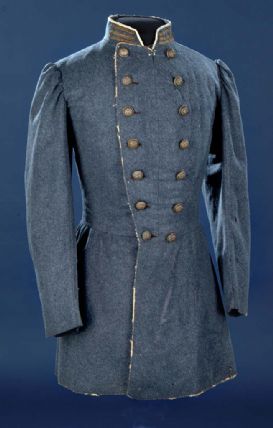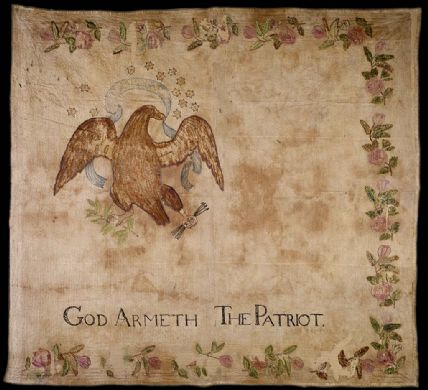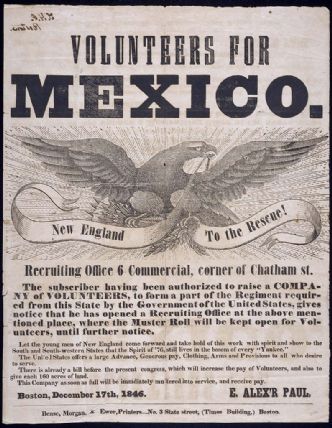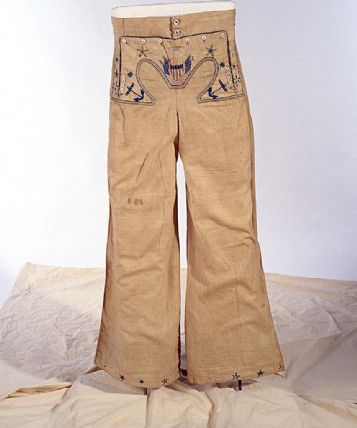As COVID-19 deaths spiked in 2020, Suzanne Firstenberg’s public art installation "In America: How could this happen…"
Museum Artifacts

Grade Range:
5-12
Resource Type(s):
Artifacts, Primary Sources
Date Posted:
12/22/2010
During the Civil War, the Bowie knife was popular with Confederate soldiers, whose arms generally were inferior. The blade, made of steel, was up to 14 inches long. In general, the bowie is usually classified as any large knife with a chipped point.

Grade Range:
5-12
Resource Type(s):
Artifacts, Primary Sources
Date Posted:
12/22/2010
This is the type of jacket that would have been worn by a Confederate medical officer.

Grade Range:
5-12
Resource Type(s):
Artifacts, Primary Sources
Date Posted:
12/22/2010
The Creek War began on August 30, 1813, when a faction of Creek known as the Red Sticks attacked a contingent of 553 American settlers at Lake Tensaw, Alabama, north of Mobile. The British were believed to be a main ally of the Indians. In response to the Alabama attack, Jackson led 5,000 militia

Grade Range:
5-12
Resource Type(s):
Artifacts, Primary Sources
Date Posted:
12/22/2010
Recruiting poster printed with "Volunteers for Mexico." Broadsides (single sheets of paper usually printed on one side) served as public announcements or advertisements soon after the beginning of printing.

Grade Range:
5-12
Resource Type(s):
Artifacts, Primary Sources
Date Posted:
12/22/2010
This gun derives its nickname of the "Mississippi rifle" from the Mississippi Riflemen led by Jefferson Davis. The Mexican-American War began in 1846. Davis looked favorably upon the war as the United States stood to acquire considerable land south of the Missouri Compromise line. It was an

Grade Range:
5-12
Resource Type(s):
Artifacts, Primary Sources
Date Posted:
12/21/2010
One of a pair of flintlock pistols Andrew Jackson presented to Major Lemuel P. Montgomery following the battle of Talladega. Montgomery, the capital of Alabama, would take its name from the major.

Grade Range:
5-12
Resource Type(s):
Artifacts, Primary Sources
Date Posted:
12/21/2010
English-made Mexican cavalry flintlock carbine, .58 caliber marked with the Mexican symbol of an eagle devouring a snake.

Grade Range:
5-12
Resource Type(s):
Artifacts, Primary Sources
Date Posted:
12/21/2010
To fight Mexico, the United States had to mobilize, equip, and transport a large force, including both army and navy components.
President James Polk planned a complex campaign. He sent one army under Stephen Kearny to capture New Mexico and then march on to California. Commodore J

Grade Range:
5-12
Resource Type(s):
Artifacts, Primary Sources
Date Posted:
12/21/2010
Sam Houston emerged as a prominent player in the affairs of Texas. Houston was elected commander in chief of the armies of Texas and took control of the Texas forces after the fall of the Alamo. On April 21, 1836, his force defeated Santa Anna and secured Texas independence. Houston was elected t

Grade Range:
5-12
Resource Type(s):
Artifacts, Primary Sources
Date Posted:
12/21/2010
Trade tomahawks were generally made in Europe and used by settlers to trade with the Indians.



















